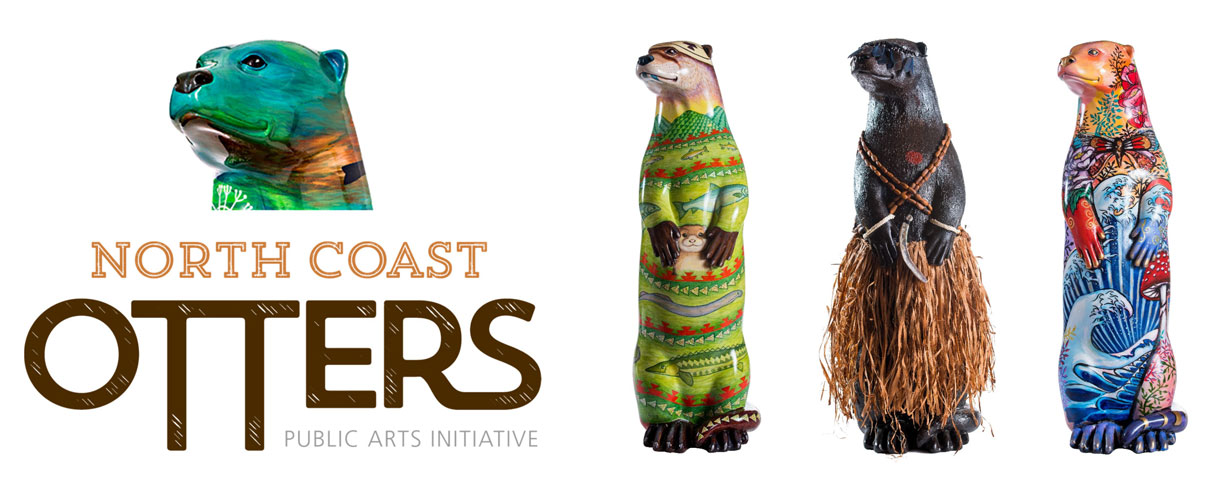Seeing a river otter in the wild is a sign of a healthy habitat, clean water, and one tough otter!
River otter numbers have expanded thanks to efforts to restore and clean up habitats, but otters need our continued vigilance to ensure they remain in the wild.
The clean, cold waters of the North Coast represent healthy habitats that have ample nutrients for fish and other water creatures, which means more food for otters.
The name for river otter in the local Wiyot language is: sukseswilh, takes an ugly mouthful.
Healthy habitats make the difference between well-fed otters, and hungry ones, so when you see an otter wish them luck in their search for clean water.
Otters are always on the move! Whether they’re looking for food to eat, or friends to play with, you rarely see them sitting still! Being as active as they are, they constantly need to eat.
Only 1% of the native saltmarsh that once covered the edges of Humboldt Bay exists today, making our restored and protected wetlands important habitats for native wildlife and clean water.
Our community's commitment to saving water now means that this finite resource can be protected for generations of people and otters to come!
Despite their cute appearance, otters are the top predators in coastal watersheds, rivers, and wetlands.
Just like us, river otters need clean water and fresh food each and every day.
Mother otters lead the way by teaching their young how to survive through play.
There are 13 types of otters in the world; 12 of which are listed as threatened or even endangered, our North American river otters are lucky.
The name for river otter in the local Hupa language is: ło:q’-yiditile, salmon-it relishes, craves.
Think your couch is lumpy? Otters make places to relax by flattening reeds and cattails in dense marshes.
Some river otters swim along the shallower parts of the ocean along our coasts, but they need fresh water for bathing and drinking each day.
For native artists on the North Coast, every natural being has her or his own story, and/or it's own song. This includes the water, plants, and animals. There is an interconnectedness at an emotional level.
Scientists have learned a lot about otters by looking in unlikely places...their scat (also known as otter 'spraint'). Scales, feathers, or crayfish parts provide clues to what our otter neighbors found for a tasty meal.
The name for river otter in the local Tolowa Dee-ni' language is: naa-ghaa-t’uu-ne, they are swimmers together.
Otter latrines aren’t just bathrooms for otters- they also serve as sites for investigation and communication through the sense of smell.
On the hunt in unusual places! Otters can be found in unlikely places on the North Coast like dunes, beaches, even the ocean in their never-ending search for food.
River otter moms on the North Coast may have 1 - 4 pups annually and provide them milk for the first weeks of life.
Each otter you see is one of the lucky ones. Most otters do not make it to adulthood - it’s difficult learning to hunt! Finding enough food means searching far and wide.
The name for river otter in the local Karuk language is: pay sáruk, down by river one.
Otters are opportunistic hunters and will choose easier and more abundant prey such as young ducks and frogs when they’re easy to find or when fish are scarce.
It takes a village, or a “bevy” to raise otter pups, so female otters often live in mother-daughter groups that can span multiple generations. However, most otters live out their lives in solitude.
Typically male otters leave the family in the first year, once they can fend for themselves. Sometimes, these males join other males and travel in groups, or “bevies.”
The name for river otter in the local Yurok language is: ne-pe’-weesh-neg, fish eater.
The river otter and the much larger, ocean-going sea otter are different species and prefer different foods; for example, river otters don't eat sea urchins.
You can be a wild otter spotter! Community members help us monitor otters throughout Humboldt, Del Norte and adjacent counties. Records include date & time, location, number of adults and smaller pups, and the otter’s behavior.
Humboldt Bay supports the living world around us, be it the great egret, coho salmon, river otter, or you and me, we are all connected by the bay.
